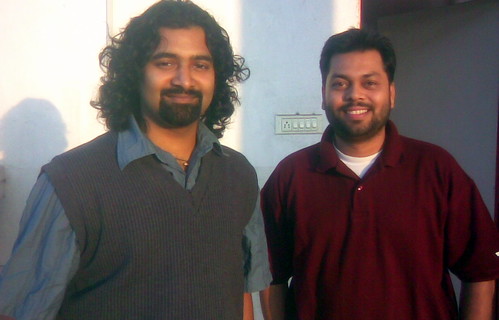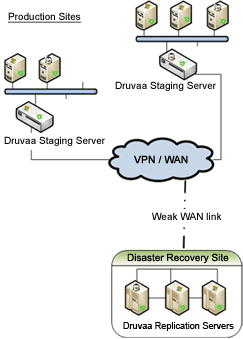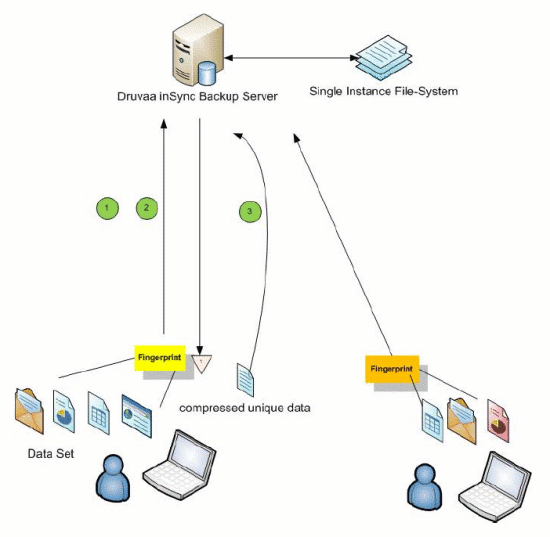 Hover.in is a Pune startup that provides a service for web publishers (i.e. website/blog owners) to automatically insert extra content into the webpages, in the form of a bubble that appears when the mouse is hovered over underlined words. The bubble can be informational (like a map appearing wherever a name of a place appears, or a background information about a company appearing wherever a name of a company appears), or it can be contextual, in-text, advertisement from hover’s network of partners, and most importantly it is fully under the publisher’s control. While services like this have been around in other forms, hover.in believes that its ability to handle any language, and the focus on Indian market sets it apart from the competition. See the PuneTech profile of hover.in to get a better idea of what hover.in provides.
Hover.in is a Pune startup that provides a service for web publishers (i.e. website/blog owners) to automatically insert extra content into the webpages, in the form of a bubble that appears when the mouse is hovered over underlined words. The bubble can be informational (like a map appearing wherever a name of a place appears, or a background information about a company appearing wherever a name of a company appears), or it can be contextual, in-text, advertisement from hover’s network of partners, and most importantly it is fully under the publisher’s control. While services like this have been around in other forms, hover.in believes that its ability to handle any language, and the focus on Indian market sets it apart from the competition. See the PuneTech profile of hover.in to get a better idea of what hover.in provides.
Hover.in was one of the startups chosen to be showcased at proto.in’s Jan ’08 edition. Earlier this, week, they announced that they have received seed funding from Media2Win, and will soon be seen in action on some large Indian portals.
PuneTech interviewed Arun Prabhudesai, CEO of Hover.in, (he also runs popular Indian Business blog trak.in) to get a deeper look at hover.in. To be true to the “tech” part of PuneTech, we also asked some technical questions that were answered by Bhasker V. Kode (Bosky), CTO of Hover.
Q: Congratulations on getting funded – especially under these economic conditions. How do you plan on using this funding – what will be the focus areas?
The seed funding was finalized few months back before the whole “recession” thing started constantly ringing in our ears.
Actually, from hover.in perspective we feel this funding as more of strategic investment where Media2Win – being a leading digital media agency – will help us to go to the market. We have immensely benefitted from the experience Me2W brings on table.
The funding is being mostly used to ramp up our technical resources and infrastructure.
Q: Your main “customers” are website publishers. Are you targeting any specific geography, like India (as the .in domain name would suggest)?
Hover.in in-text platform is global and open for web publishers and bloggers from all geographies. However, we are actively targeting Indian market first. India currently does not have any in-text platform and that’s puts us in a great position to capture this market. Infact, hover.in is world’s first in-text platform that is also language agnostic, which opens up a large chunk of regional language websites.
Q: I keep hearing that “there isn’t enough money to be made from online advertisements alone in India, except for a few specific verticals.” And you seem to be going squarely after this market. What is your take on this issue?
You know, this people have started talking about because there are too many ad networks that have come up in last couple of years…more than 15 odd I can count on my fingers !
But if you look at the larger picture, online advertisements are the only ones that are growing year on year. Traditional advertising is hardest hit…
For us the advantage is, we DO NOT compete with traditional ad networks as they are 99% display advertising. We are in-text and this market has not even tapped. From publisher perspective, it is an additional channel for content and monetization.
From Advertisers, this is the most targeted way of displaying their advertisement. Also, as we follow CPA / CPC kind of model, advertisers have full ROI on investment.

Q: If I remember right, you are using Erlang for your development – a very non-standard choice. Can you share the reasons behind the choice? Isn’t it difficult to get Erlang developers? In retrospect are you happy with this decision?
(by Bosky)
Erlang has been used to build fault-tolerant and distributed applications for quite some time in areas like telecom, especially for allowing highly granular choices in networking. Off-late projects like ejabberd, mnesia, yaws and tsung have shown how products spanning several hundred nodes can be implemented with the erlang stack and in particular – web technologies.
It most definitely is a paradigm shift courtesy of it’s functional programming concepts, and we are glad we took that decision because of its inherent focus on distributed systems, and although the erlang developer community in India is non-existent, with the right attitude towards learning now a day’s it does’nt matter. Moreover it only took a couple of months for our developers to get used to the semantics, following which as with any stack – it’s about what you do with that expertise.
Erlang gives you that power, but at the same time – there are areas where it might not seem a right fit and perhaps look to perl or ruby for tasks that suit them. For example, we use python wherever it seems required as well. The good part is erlang open-source community has quite a closely-knit presence online, which does help quite a lot. We ourselves are now looking at contributing and opening up internal projects.
Q: One of the important challenges for hover.in will be scalability. How are you gearing up to handle that?
(By Bosky)
Right from day one, erlang based systems like ours are designed built for horizontal scaling – which allows plug-n-play addition to our growing cluster. Regardless of the development stack you work on – some things need to be built in early and that’s something we spend a whole lot of time during our first year fine tuning.
Especially for us – where practically every page hit – for every one of our users – reflects a page visit to us where we need to compute and render hovers in a matter of milliseconds. To this end – before starting out application-logic, we first built out our own distributed priority-queuing systems, our own distributed crawler and various indexing mechanisms, a time-splicing based cpu allocation for various tasks, which made things like adding jobs, executing them a more controlled operation regardless of what the actual job is and has been handling burst mode quite well.
Moreover, we can also add workers on-the-fly to almost all major tasks much like an Amazon ec2 instance where each work itself is supervised for crash recovery thanks to erlang’s open telecom platform libraries and guidelines. Caching is something else we have and continue to work on consistently. No matter how many papers, algorithms or implementations there are out there – every system needs to fine tune their own unique set of optimizations vs compromises that reflect their infrastructure, traffic, memory & space needs,etc ..
Having granular control of this is something that is a real challenge as well as a pleasure with the stack (Linux, Yaws, Mnesia, Erlang). We ‘ve also been quick to adopt cloud-computing initiatives like Amazon s3, and more recently cloudfront for our static content delivery needs.
We’re also working on a parallel map-reduce implementation, exploring options with xmpp, and better logging for our developers to find and fix glitches or bottlenecks, eventually translating to a faster and better user experience for our users.
Q: You moved to Pune specifically to start hover.in. What made you choose Pune?
Yes, I did move to Pune to start hover.in, however, it would not be fair to say that is the only reason why I moved here. I have lived most of my formative years here in Pune, before going to USA. And as you know, once a Puneite, always a Puneite!
Actually we had to choose from 2 cities – Chennai (Our Co-founder, Bhasker VK, is from Chennai) and Pune. Few important aspects tilted the balance in favour of latter. Better weather, Pune’s proximity to Mumbai where majority of big publishers, investors and advertisers have their offices. To add to it all Pune has great startup & tech community.
Q: In the journey so far, have you made any significant mistakes that you’d like to share with others, so they can learn from your experience?
Absolutely… Mistakes are important aspect of learning process and especially for first generation entrepreneurs like Bosky and Me. I think “attention to detail” is one of the most important aspects that an entrepreneur should watch for. You need to have clear in-depth blueprint in your mind about the direction your startup is going to take, otherwise it’s very easy to fall off the cliff!
Optimizing, especially during these tough times – be it resources, infrastructure or even your time. Optimize everything. Startups can’t afford any leaks.
The third thing and the one which I don’t see very often. Partner with other startups; see if there are any synergies between you. In most cases it is a win-win situation for both of them
Q: Are you partnering with other startups? At this stage, would it be possible for you to share info about any of these partnerships?
Yes, we are…one example would be Alabot (another Pune startup -ed.). Where we have got their NLP application (Travel bot) inside our hoverlet. So for any travel related publishers, it becomes a boon. So a win-win situation for both of us.
Another example would be – Before we got our own office, 2 other startups were kind enough to accommodate us for few weeks – These kind of partnerships in any way possible go a long way !
Q: What would your advice for struggling Pune entrepreneurs be?
Entrepreneurship is a roller coaster ride … It ain’t easy, but the thrills along the way make it all more than worth it!
Just jump into the rough waters and by the time you reach the other side, you will be glad you did it….
![Reblog this post [with Zemanta]](http://img.zemanta.com/reblog_b.png?x-id=1f52eb9a-952b-4003-a9db-914a70fad31a)
![Reblog this post [with Zemanta]](http://img.zemanta.com/reblog_b.png?x-id=7c529a7d-0904-45bf-b37c-270f27c3d14d)


